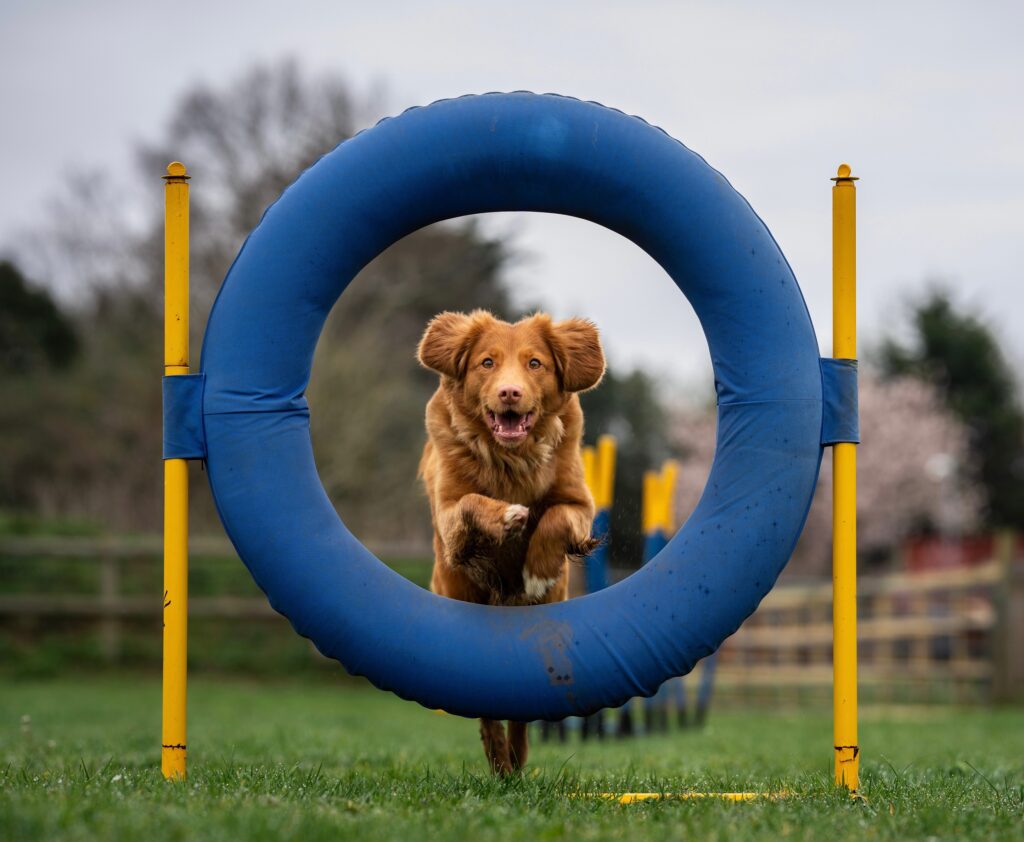 ”Joy marketing” is a way to infuse your business marketing with messages and imagery that cause potential clients to experience positive feelings of happiness, trust, or delight.
”Joy marketing” is a way to infuse your business marketing with messages and imagery that cause potential clients to experience positive feelings of happiness, trust, or delight.
Marketing with an eye towards joy helps clients associate feelings of happiness with your brand, creating an emotional connection that urges them to book your training course, pick up the phone for a consultation, or sign up for your newsletter
How do you inject these good feelings into your dog-training marketing? Here are five ways to gain emotional connection and client engagement through a little happiness.
1. Decide what joy means to you and your clients
When potential clients land on your website or social feed, you want them to feel completely at home. Every dog person loves dogs. But, are your clients coming to you for help with puppy socialization, dog agility and fitness training, a happy stress-free home, or adventuring with their companion dog? What feeling does a potential client want from their relationship with their dog? This is a feeling that you can help make a reality as their dog trainer, and this is the joy you want them to experience on your site and social feed, through the associated images, articles, and messages you share.
Does this mean you can’t discuss serious topics or use serious images anywhere in your social media or email messaging? Don’t worry — you certainly can! Think of “joy marketing” as a dedicated campaign that is a strong part of your overall marketing, and always keep in mind that humans are driven by feelings. If you want people to remember your brand and purchase your services, they need to make a positive, emotional connection with it.
2. Share your cause
Potential clients love dogs, so be sure to share how your business loves them, too. When you share your cause in an authentic way, dog-people see you as a kindred spirit.
-
- Highlight your business cause. If a portion of your profit goes to a canine cause, include that message near where new clients submit their payment for services. They’ll feel good when they hit that button to complete the transaction, knowing that “10% is going to the local animal shelter” or to a similar cause you believe in.
- Share the ways you help in your community. Do you provide safety training for volunteers at your local shelter? Did you give a stray dog a lift home to his worried pet parents? Are you drumming up donations for your favorite animal cause at the holidays? Share these images and stories on your social media posts and encourage people to join in. Include them in your newsletter, or write a quick blog post. Give your dog-loving community a great reason to celebrate how your business helps dogs and dog guardian
- Lend your voice to other causes. Use social media and your newsletter to publicize local pet-related events, fundraising campaigns by non-profits, and pet-care holidays like Adopt A Shelter Dog Month, Deaf Pet Awareness Week, etc. Not only will you spread awareness of events that help dogs, but all that great content will build a helpful, active social media feed that reaches even more potential new clients.
3. Build joy with anticipation
People love to be surprised. By including a sense of anticipation and a bit of fun in your marketing, you’ll stop them mid-scroll to read your social media messages or open your latest newsletter.
-
- Create great subject lines. Your newsletter subject line is all your audience sees when they open their email inbox. You want that short snippet to evoke anticipation, excitement, and curiosity so they click “open” instead of “delete.”
- Don’t be afraid to let people see your personal side as it relates to pet guardianship and dog training. Share images of your personal pets, especially when they are doing something sweet or silly, or post short videos of them learning something new. People will want to learn more about you!
- Give unexpected gifts. There’s no need to send candy or gift cards when you’ve got a brain full of experience to share. Email your clients a bonus training video, or if you discover you’ve taken a particularly handsome or cute photograph of their dog during class, send them a high-quality digital image privately via email.
 4. Create an authentic social connection
4. Create an authentic social connection
We’re not going to suggest you “friend” all your clients. Everyone needs some privacy! But that doesn’t mean you can’t interact with dog guardians on social media in an authentic and friendly manner.
-
- “Like” your client comments on your business social media posts and offer a friendly, personal reply whenever possible. Follow up with a thank-you email for really positive comments or testimonials they make publicly, so they get that glow knowing their feedback was appreciated.
- If your customer has a business of their own, follow it on social media. Show them that their success, both in training class and in their own business, matters to you.
- Share lighthearted or funny moments from the point of view of a dog guardian. Stay away from business jargon or profession-specific humor your clients might not get. You want your lighthearted posts to evoke joy, not uncertainty. Don’t overthink it. A simple image of two dogs happily napping together, a video snippet of puppies pouncing together in puppy kindergarten are guaranteed to create a smile.
- Share joyful dog articles from sources you believe in. If you loved an article, your followers probably will, too (if it’s targeted toward dog families versus just dog trainers).
- Include your client‘s dogs in your social posts. If you’re taking in-class photographs or video to help clients review their training sessions, ask for permission to celebrate their dog’s successes or cute moments on social media. They’ll be thrilled to see their dog featured, and potential new clients will enjoy the glimpse into your classes.
5. Celebrate milestones and extend compassion
If you notice a client celebrating online – perhaps for the dog’s birthday or adoption anniversary – be sure to jump in with a quick and sincere congratulations and maybe one of those “unexpected gifts” from #3 above. You can also share a compassionate message when you learn of the passing of a current or past client’s beloved pet. A signed card shows your client that you were touched by their dog’s life, too. As Chewy has learned through their habit of sending their customers flowers or signed cards, compassion creates good feelings, even in sad times.
Spread positivity in both marketing and dog training
Positive training techniques help build a trusting relationship between people and dogs. Positive messaging also creates a comfortable and happy relationship between dog trainers and their clients! Infuse a little joy into the business marketing for your dog training business. You can share your experience with the Victoria Stilwell Academy team here on Facebook. We’d love to hear how it goes!

 4. Create an authentic social connection
4. Create an authentic social connection

